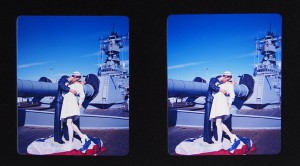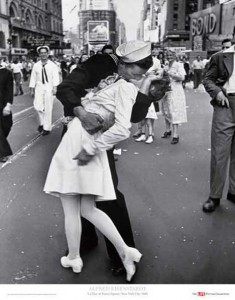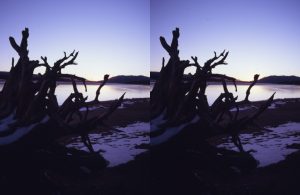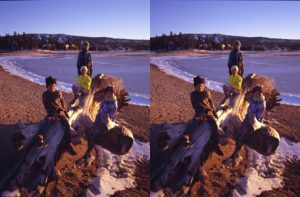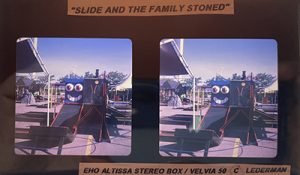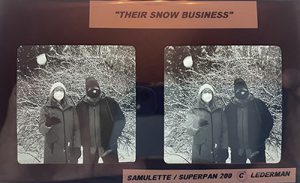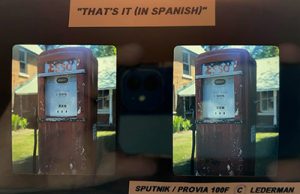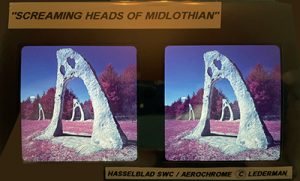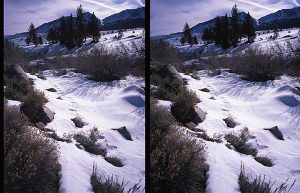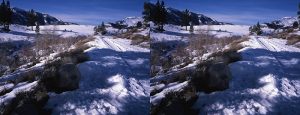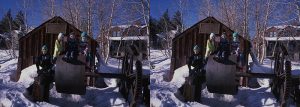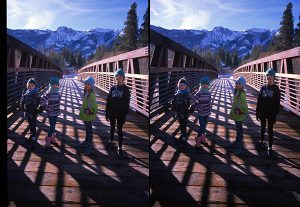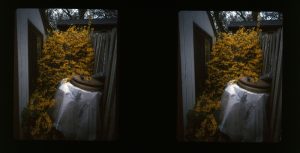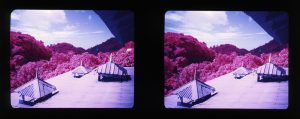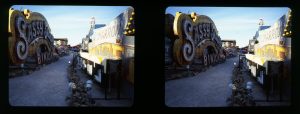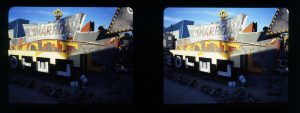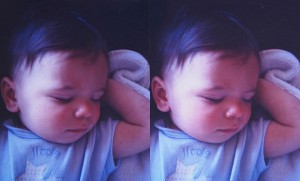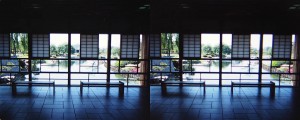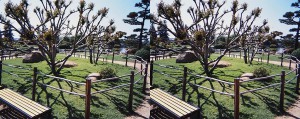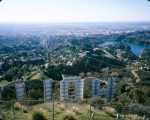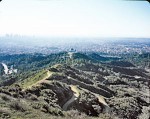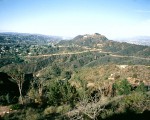Title: Statue of Alfred Eisenstaedt’s V-J Day Life Magazine Photograph Aboard the USS Iowa Battleship
Location San Pedro, California December 2012
Technical Fuji GA645w (cha-cha no slide bar ), Fuji Provia F100
Comments In 2012 the West Coast’s only Battleship opened to the public in San Pedro with the USS Iowa. The self-guided tour takes you on a journey through World War II, the Korean War, and the Cold War to experience the life of a sailor on the lead ship of the last class of gunships. The USS Iowa was the only ship of her class to have served in the Atlantic Ocean during World War II. Despite the 16” guns, 5” guns, missile decks, bridge, mess areas, and world famous Captain’s Cabin – with the only bathtub installed on a battleship for a President, the most interesting item on the boat for me was this statue errected of the photograph of the nurse’s iconic kiss that marked the end of World War II. The battleship alone is certainly a symbol of this and world peace but for a public display, they chose to combine the weapon of a battleship with the softness of a kiss. The lasting power of a single photograph lives on.
On Aug. 14, 1945 New York City’s Times Square went dark at 7 p.m. and then at 7:03 p.m.,more than 750,000 people roared in jubilation as the words “OFFICIAL—TRUMAN ANNOUNCES JAPANESE SURRENDER” blazed across the news scroll. Elated by the news, people in the crowd were hugging and crying tears of joy, but it was a far different experience for Edith Shain, a nursing school student. “This sailor just grabbed me and kissed me,” she said. “Any female closes her eyes when she’s about to kiss so I never saw the guy, and then I walked away. I was kind of embarrassed. I didn’t say anything about it to anyone.” What Shain didn’t realize, until a week later, was that her “indiscretion” was caught on film. While browsing a copy of a Life magazine, Shain, then 27-years-old, recognized herself in what has became an iconic photo titled “V-J Day” (Victory over Japan) of a sailor slightly dipping a nurse in a white uniform and kissing her. Of the kiss, Shain said, “It was very nice, and of course, it was in the days before you’d scream and go to an attorney. It was the best of times.” The famous photo was taken by Alfred Eisenstaedt, a photojournalist for Life Magazine. In his memoirs, Eisenstaedt explained, “Suddenly, in a flash, I saw something white being grabbed. I turned around and clicked the moment the sailor kissed the nurse….People tell me that when I am in heaven they will remember this picture.” Though Eisenstaedt died in 1995 at the age of 96, the celebrated picture has not lost its significance. In celebration of the 60th anniversary of V-J Day, Shain flew to New York City where a slightly larger-than-life-size statue titled “Unconditional Soldier” by J. Seward Johnson based on the Life photograph was unveiled on Aug. 11, in Times Square.
